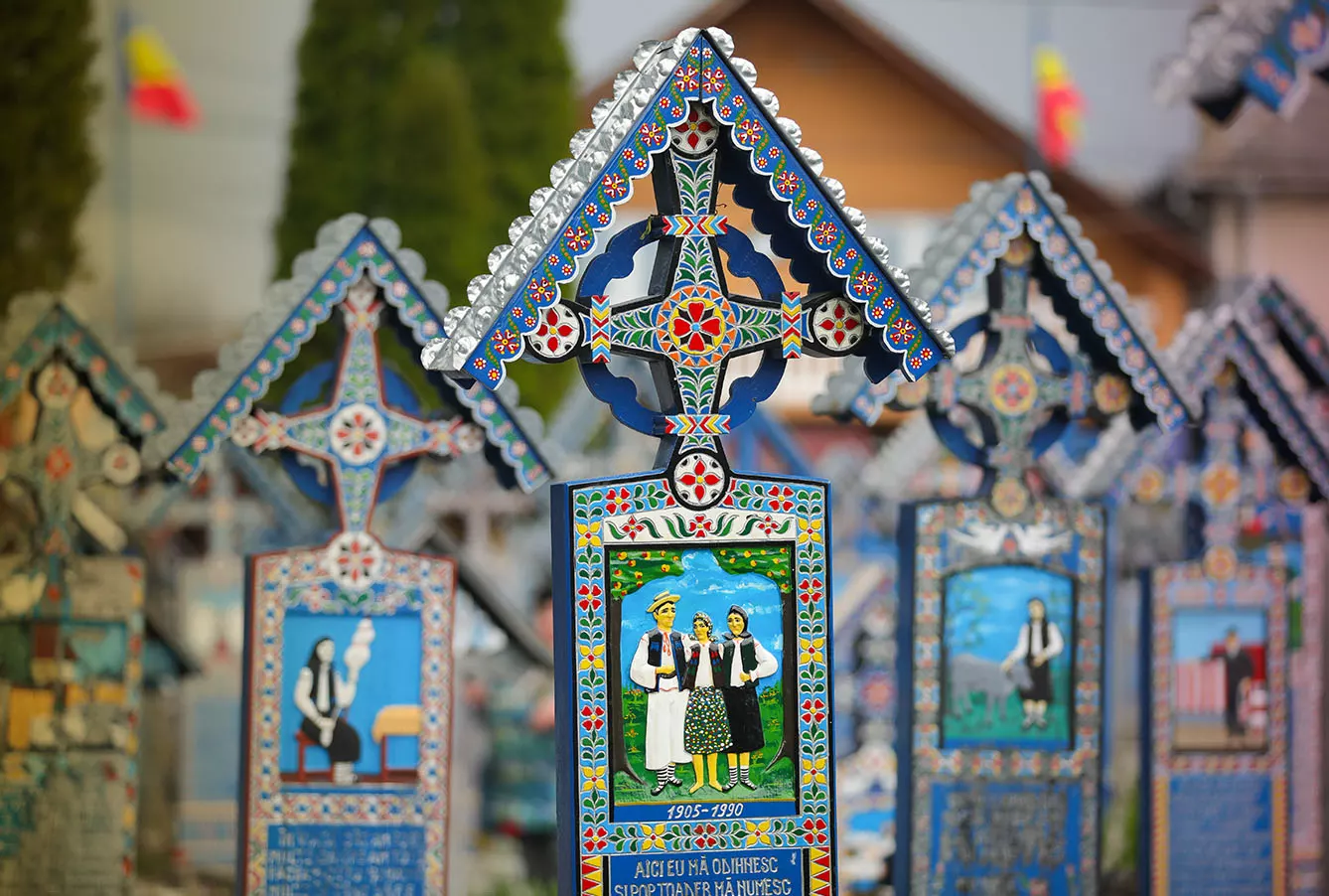There’s an old wives tale saying that you should always remain positive, no matter what. Romanians have taken this quite literally and implemented the saying as a principle in all of life’s aspects, including the eternal departure of a loved one. The Merry Cemetery in Săpânța is a place where people decided to honor and commemorate the life of the locals in the spirit of positivity and hope – stripped away from all the grief and mourning.
This place is like no other graveyard you’ve ever seen. Just as the name implies, the Merry Cemetery is not a place of sorrow and tears, but one of anticipation and relief. Each gravestone is handcrafted in wood and carries more than just the name and life span of the person buried underneath it.
A celebration of life well-lived in Săpânța
Painted in bright colors and engraved in bas relief, the cross acts as an open book into the life of the departed. The beautiful paintings are handcrafted to showcase the late individual’s profession, hobbies, or career. More often than not, it shows the very scene that led to their death. What truly stands out is the presence of poems on each grave. An original epitaph is added to each cross to shed a little light on the life of the gravestone’s eternal inhabitant.
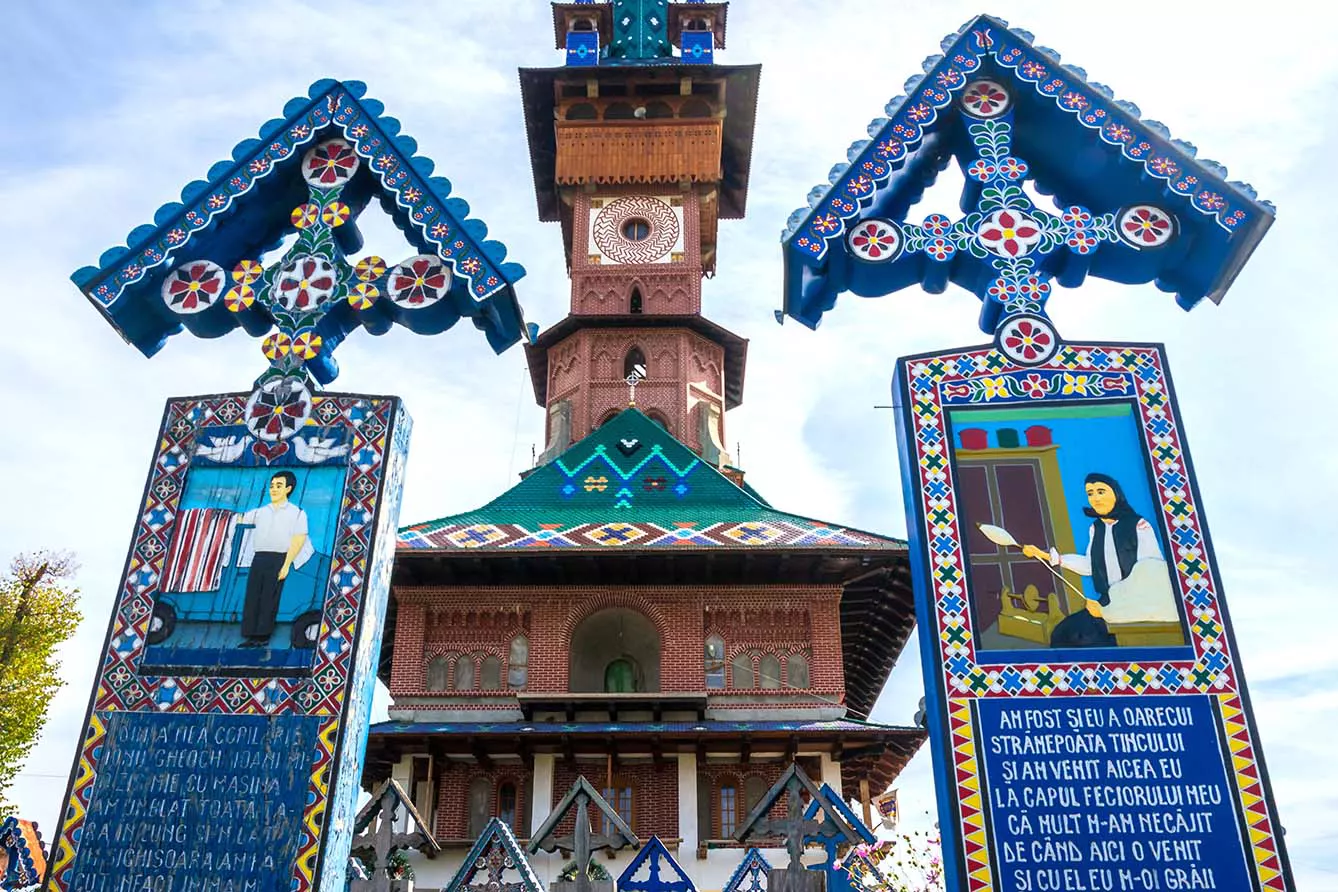
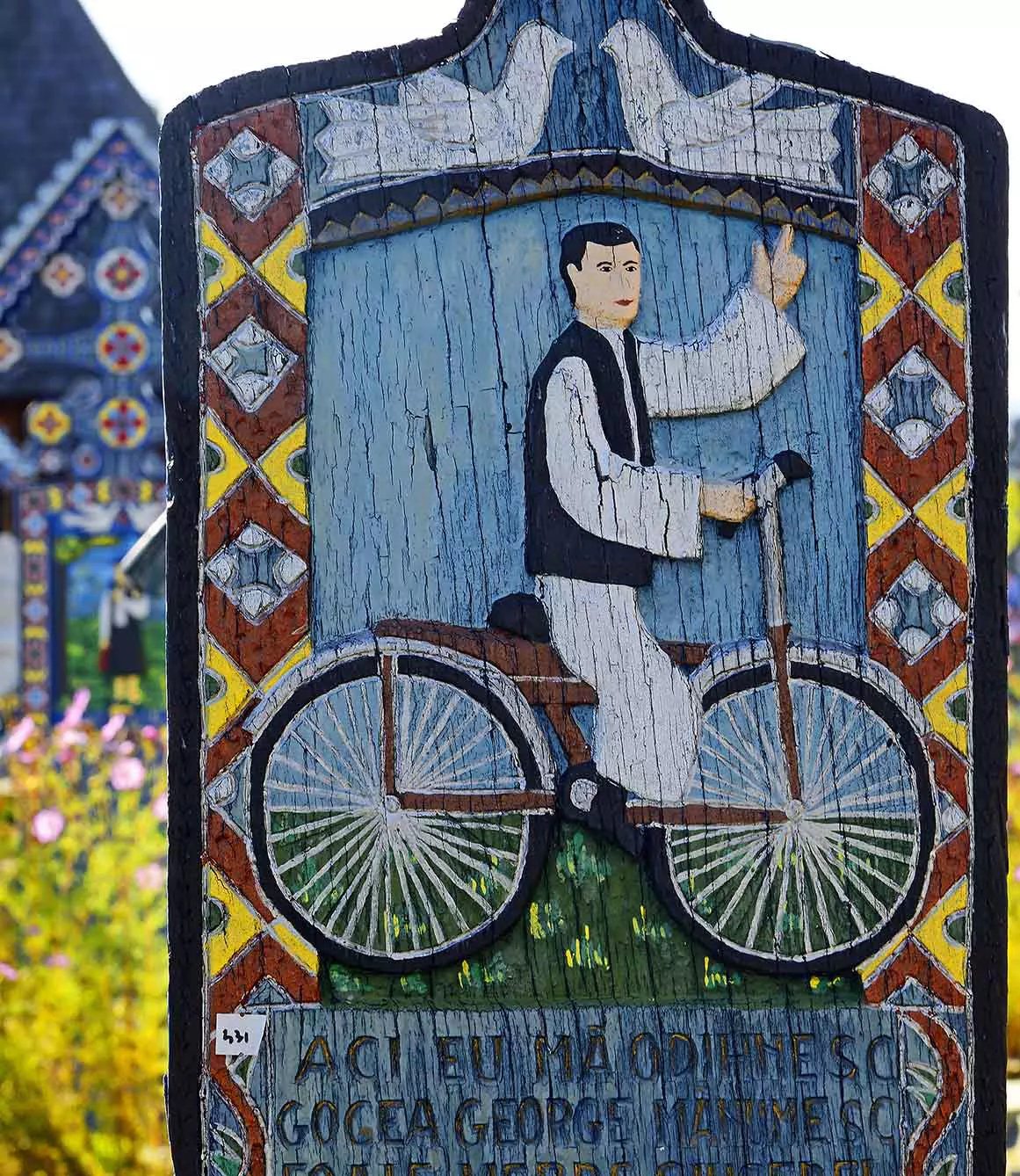
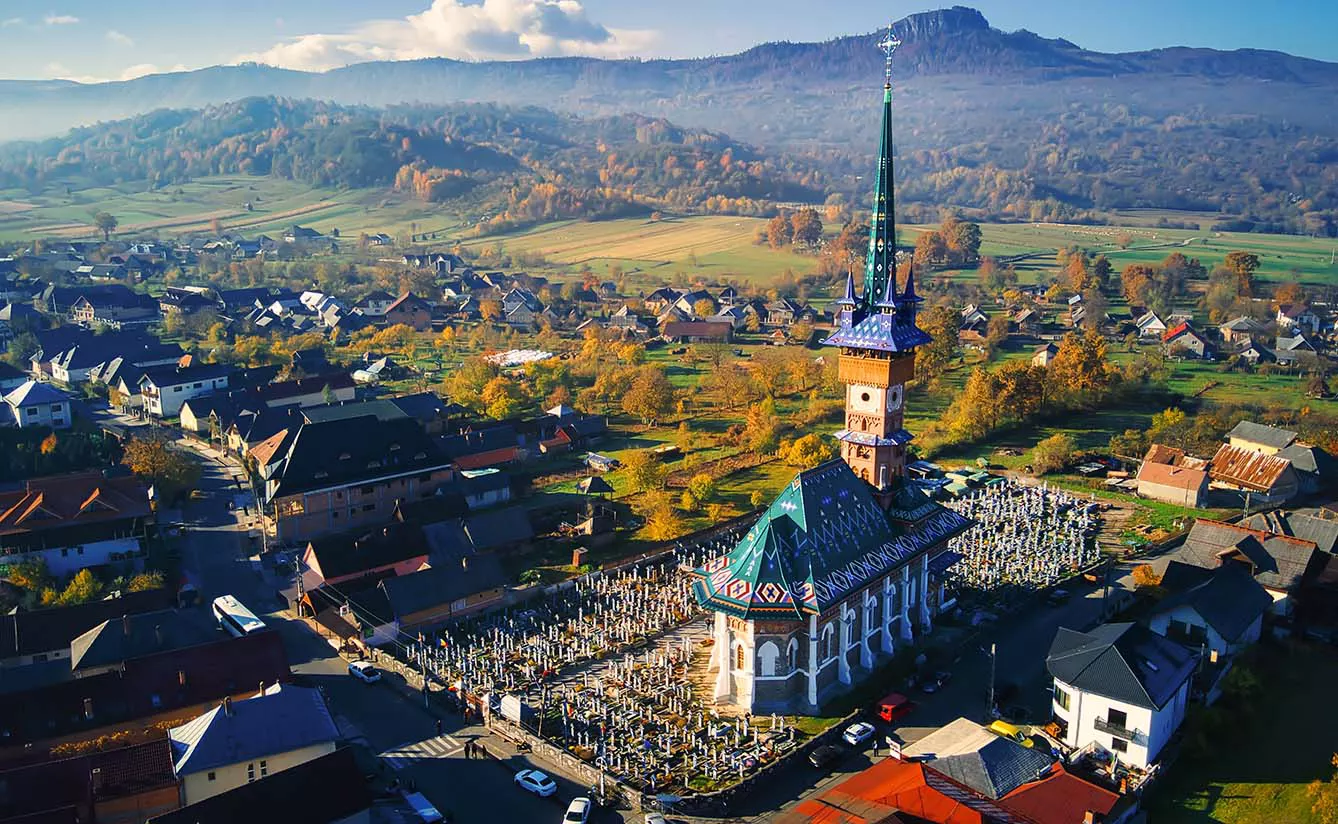
These short poems are rather witty; they can be whimsical and odd, or truthfully heartbreaking. Some read, “Burn in hell, you damn taxi that came from Sibiu. As large as Romania is, you couldn’t find another place to stop, only in front of my house to kill me” or “Under this heavy cross/Lies my poor mother-in-law/Three more days should she have lived/I would lie, and she would read (this cross)/You, who here are passing by/Not to wake her up please try/Cause’ if she comes back home/She’ll criticize me more.” As one may gather, these are not your typical epitaphs. As of today, there are over 800 such tombstones.
The Merry Cemetery: Where it all began
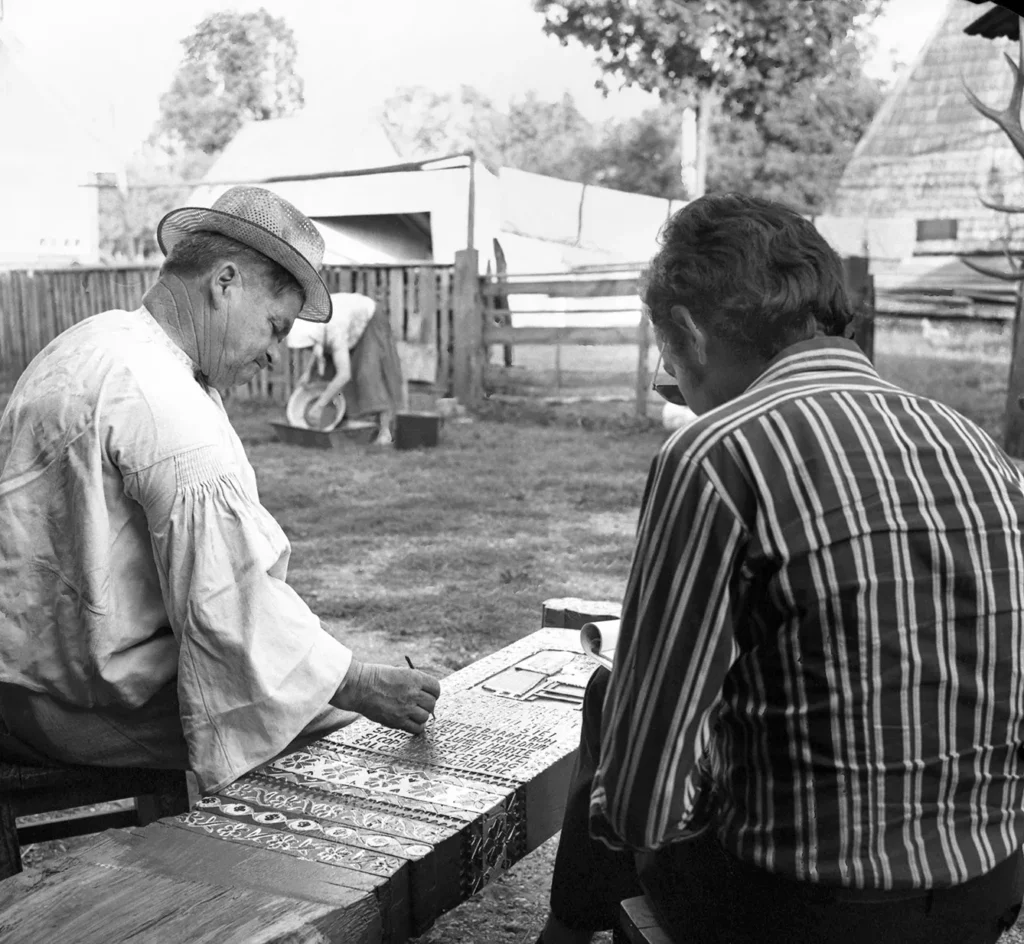
And if you’re wondering where and how it all began, you might be surprised to hear it was the work of one man named Stan Ioan Pătraș. It all started in 1935 when Pătraș crafted the first “Merry Cemetery” original cross. Since then, Ioan took his last breath, and his cross can be admired in no other place but the cemetery where he dedicated a significant part of his life. From then on, Dumitru Pop’s skill continued the tradition, a tradition he made sure would not die with him, for he meticulously taught pupils to become not just sculptors, but painters and poets.
Now that we’ve tackled the how all that is left is the why. The Merry Necropolis is unique not just in Romania, but in the world. Why is that? The spirit of positivity and inclination towards celebrating with songs of joy rather than cries of mourning is believed to originate from the Dacians. They believed in the afterlife and perceived death as a means of getting to it.
Ioan Pătraș, a simple but talented God-fearing man, got inspired by this tradition and decided to go above and beyond the traditional limits of the occurrence, bringing a sense of hope and peace to an otherwise dark and heavy experience. And so came to life this unique oxymoron that can be found in the county of Maramureș, Romania. It is a graveyard characterized by its humor and joyfulness, brought to life by simple yet passionate and skilled villagers who believe there is more to death than just the end of life.


